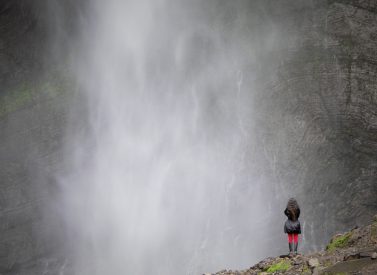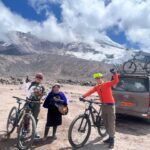Discover Peru’s Little-known Chachapoya Culture
 by Tom Shearman on 25th February, 2022
by Tom Shearman on 25th February, 2022
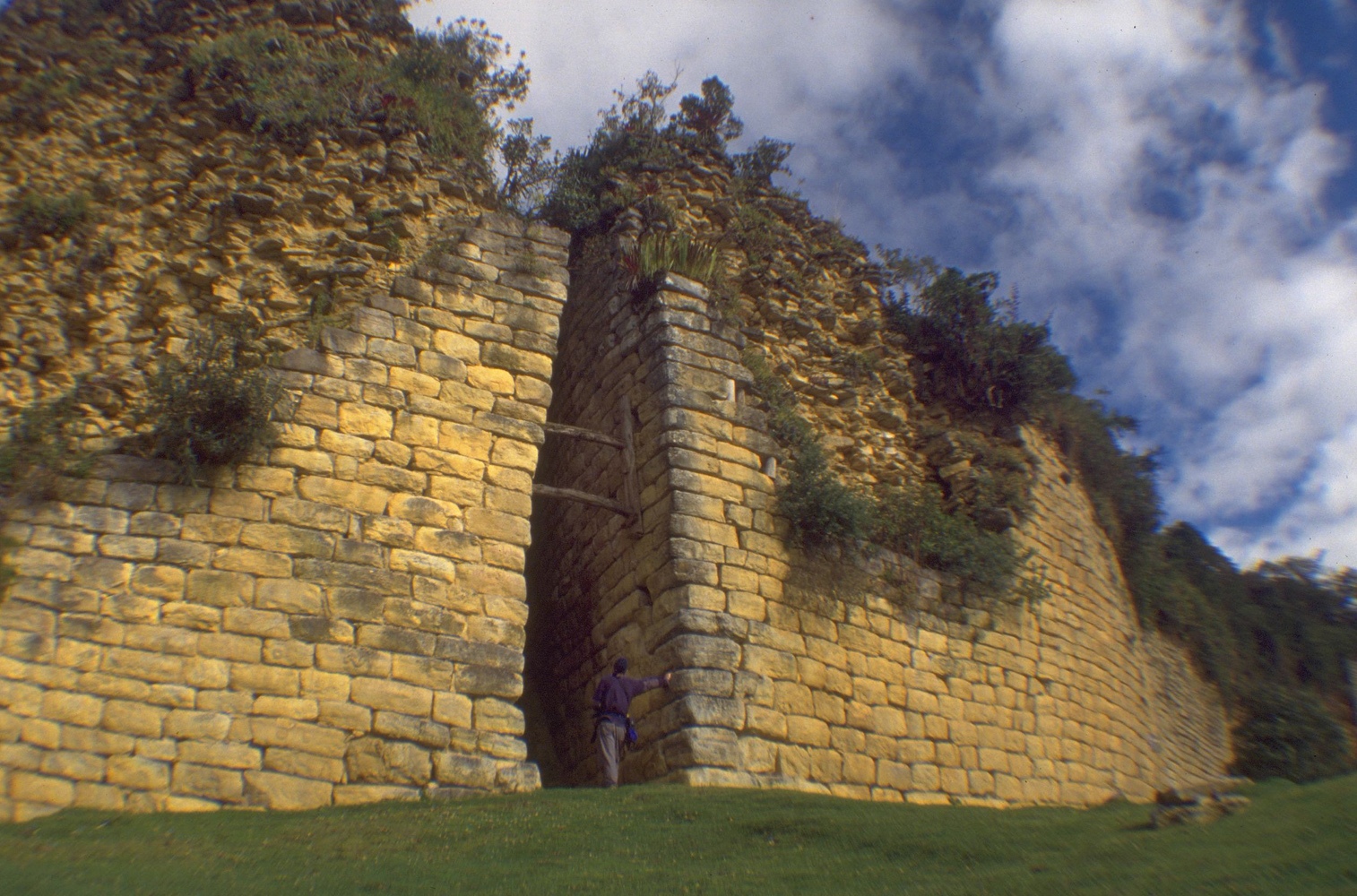
The Chachapoya culture and people are one of Peru’s endearing mysteries.
Little is known about this pre-Incan civilisation, save for some scattered ruins and funeral tombs.
Who Were the Chachapoya People?
Also known as cloud people, the Chachapoya culture was full of warriors and skilled weavers of alpaca and llama wools. They settled a remote corner of north-eastern Peru in pre-Colombian times in what would be close to modern-day Cajamarca.
But the Chachapoya people scarce had time to come to terms with Inca incursions on their land before the Spanish arrival hastened their demise.
Nowadays, the Chachapoya culture is best known for its skilful mummification techniques and almost inaccessible tombs built into cliffs. They were fearsome warriors, great shamans, and artists. Let’s look at what we know about the Chachapoya people and civilisation.
Where Did the Chachapoya People Live?
The Chachapoya civilisation lived in the northern Peruvian Andes, embraced between two great rivers; the Marañón to the west and Huallaga to the east. Spanish colonisers estimated that the Chachapoya territory was 150 miles (250km) in length and between 60-90 miles wide (100-150km).
Its people lived in small villages of circular stone houses built across forested ridges and mountain tops. Some of these trademark ruins survive today. Experts think the Chachapoya culture flourished from AD 800 until they came up against the fearsome and expanding empire of the Incas in 1470.
There are few known archaeological remains to study at present. What has been found seems to mark the Chachapoya identity as distinct to their neighbours at the time, often described as containing a bold and independent spirit. Iconic masonry friezes were among their specialities, too.
Chachapoya people hunted, gathered, and farmed llamas and alpacas to survive. They produced textiles and pottery to exchange with neighbouring villages. Deer antlers were prized as home and tomb adornments. Like the Incas, the Chachapoya people developed elaborate drainage systems that fed terrace systems for crop growth in valleys and at heights of up to 3,800m (12,467ft) in the mountains.
What Defined Chachapoya Architecture?
Most known Chachapoya settlements appear randomly constructed, with 30 up to 400 trademark circular, thatched-roof structures following a ridge or mountain terrain. Only Kuelap seems to follow a plan with patios and connecting paths.
Chachapoya houses were unique in the Andes thanks to sitting on solid platforms, decorative masonry friezes, and occasionally deer antlers embedded into walls.
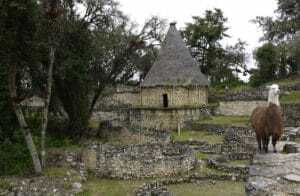
What Made the Chachapoya Culture Special?
Little is known about these so-called cloud people apart from the discovered ruins and some chronicles from colonisers. Around 350 known Chachapoya sites are scattered between modern-day Bolivar, Celendín and Leymebamba. There are mausoleums, sarcophagus, and funeral caves to visit, and archaeologists keep working to discover more.
We know that Spanish colonists noted how Chachapoya people made fine and highly-prized clothing for the Incas, articles held in great esteem for their decoration and quality. Museo Leymebamba house some fine examples found at Laguna de los Cóndores.
The Chachapoya were taller than their neighbours, too, with skeletal remains showing men reaching heights of 1.59m (5’3”) and women 1.46m (4’9”).
They wore woollen clothing and distinguished themselves through headdresses. One Spaniard remarked that the Chachapoya people were fierce warriors, bellicose and indomitable, while another described them as people of war. Their pottery and household handicrafts were functional.
How Many Ethnic Groups Were Part of the Chachapoya Culture?
There were seven recognised ethnic groups within the Chachapoya culture:
- Pomacochas
- Chillao
- Coribamba
- Chachapoyas
- Sesuya
- Pacllas
- Cajamarquilla Yungas
- Chilchos
What Were the Traditions and Customs of the Chachapoya People?
Much of what we know about the Chachapoya customs stem from their tombs. They lived in a wet, humid climate, and they took great care to preserve human remains in dry and cold places. There was no embalming until the Incas arrived.
The mummies found at the Laguna de Los Cóndores show how the Chachapoya incorporated this new skill. They took it to such levels that many mummies found are in excellent condition.
Some pictographs depict decapitation scenes — they were known as head hunters, in ceremonies and battle — although much is speculation. The looting of tombs and ruins has hindered modern understanding of the Chachapoya.
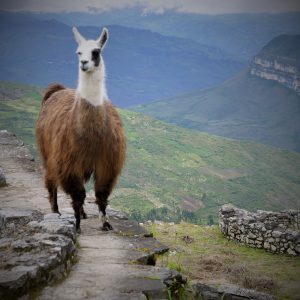
Why Did the Chachapoya Culture Die Out?
The Chachapoya region straddled many climates, from high mountains to steamy valleys, making it a fantastic source for food, medicinal herbs, and animals and their pelts.
The rapid Inca empire expansion saw them conquer the Chachapoyas in 1470. Religious beliefs were imposed, leaving little trace of Chachapoya’s spiritual worldview for us to explore. There appears to be a strong connection between the living and the dead due to offerings left at tombs.
The Spanish arrival in the 1530s saw the Chachapoya throw their weight behind the Europeans, believing it to be in their best interests in their battle against the Incas. However, the Spanish soon enslaved the population, demanding their land, silver, agricultural produce, and labour in return for survival.
The Incas had at least allowed the Chachapoya to retain their hierarchies. The Spanish threw all Chachapoya classes together, leading to internal quarrels and disputes.
Poverty and introduced diseases like smallpox, measles, and diptheria saw the Chachapoya people’s 300,000-strong population slashed by 90% within 200 years of first contact with the Spanish. The town of Chachapoyas reported its 87,750 population falling to less than 20,000 between 1549 and 1608.
What Language Did Chachapoya People Speak?
The language of the Chachapoya people remains a mystery. Some trace elements exist in non-Quechua place names such as Kuelap or Huemal and surnames ending in -mal and -lap.
The people’s identifier — Chachapoya — has unknown origins too. Some claim it means a place of strong men, others that it alludes, in Quechua, to cloud people.
What Is the Cultural Legacy of the Chachapoya People?
The Chachapoya people’s funeral tombs varied from capsules (purunmachus) to stone tombs called chullpas. The Chullpas were daubed with white, yellow, and red paints with the customary deer antlers and friezes and often placed in hard-to-reach cliff tops protected from rainfall.
So far, what we have from the Chachapoya people are their settlements, mummies, and cliff-top tombs, plus some textiles and ceramics.
What Is the Best Example of Chachapoya Ruins?
The Kuelap fortress is South America’s most significant ancient stone construction of some 420 buildings — the Machu Picchu of the Chachapoya people. It was abandoned when the Spanish arrived and covered in a forest when rediscovered in 1843. By 1892, word got out, and explorers arrived.
Kuelap sat 3,000m above Utcubamba and was inhabited from around AD 500. It is 600m in length and around 110m wide, occupying six hectares. Its defining feature is an enormous perimeter wall that reaches 11.5m in parts. Some of its limestone blocks weigh up to 2.5 tonnes.
The site features ceremonial, residential, and weapon storage areas. Up to 3,000 people were thought to live at Kuelap at its height.
Unmanaged tourism hinders its fragile state, and further erosion occurs because of extreme weather conditions.
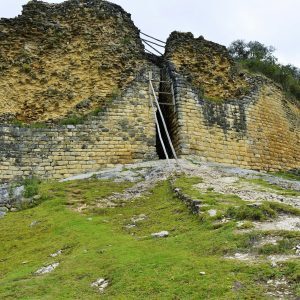
Where Can I Find Chachapoya Culture Ruins?
There are hundreds of Chachapoya culture ruins across the former territory.
Laguna de Los Cóndores: This site, perched on a ledge 100 metres above the lake, went untouched for more than 500 years. More than 200 mummies were found, with six of the chullpas intact and all face Llactacocha. These sites are a 10-12 hour mule ride from Leymebamba. Visitors were impossible to control and often took souvenirs from the site.
Llaqtacocha translates as ‘town on the lake’ and features 130 settlements and associated burial chullpas. Sadly, roaming cattle have reduced many walls in a place that boasted an elaborate drainage network.
La Petaca-Diablo Wasi: Elaborate-constructed chullpas, covered in red pictographs, gaze over the San Miguel de Malpaso stream between Leymebamba and Atuén. Some mummies were enclosed in natural caves, while cantilever balconies front some tombs. These seemingly impossible to reach tombs have been raided — the Chachapoya people probably used ropes or ladders for access.
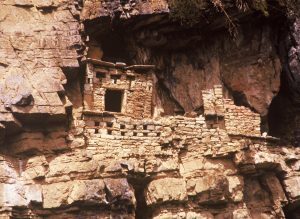
Gran Pajatén (Abiseo): Gran Pajatén sits on a ridge high above the Montecristo river, connected to other sites by a network of pre-Hispanic roads. It featured 26 buildings and agricultural terraces and was occupied from around 200 BC.
Vira Vira, which overlooks Laguna Huayabamba, features some of the most significant Chachapoya circular structures among its 200 buildings, some up to 14 metres in diameter.
La Congona is an ancient settlement, famed for the variety of its friezes in its northern and southern sectors.
How Can I Find Out More about Chachapoya Culture?
The Centro Mallqui research centre operates as the research and management arm for the Chachapoya region. Centro Mallqui also runs the Leymebamba Museum in Chachapoyas.
The museum is home to mummies recovered from Laguna de Los Cóndores, and a visit is highly recommended.
How Do I Travel to Chachapoyas?
There are no direct flights to Chachapoyas.
Many people fly Lima-Cajamarca and take a bus via Celendín or a private transfer to Chachapoyas. Alternatively, people fly or bus Lima-Tarapoto then take a colectivo, taxi, or private transfer to Chachapoyas.
Some several daily buses and colectivos connect Chachapoyas and Leymebamba.
How Can I Find Out More about Chachapoya Culture?
The best way to learn more about these fascinating cloud people is to visit the beautiful region of Peru they called home. Not many people make the effort to travel to these remote corners; Kuelap is a stunning sight, and you’ll often have the ruins to yourself.
Alternatively, read this excellent, in-depth study written for Leymebamba Museum.
We have two fantastic trips which serve as guidelines to what is possible. Our Chachapoyas trek is a walk through the ancient past, visiting Chachapoya burial sites and settlements while walking through beautiful Andean scenery. Other adventurers love to combine the stunning Gocta waterfall with Kuelap from a comfy hotel base set into the forest.
Contact us for more about Chachapoya culture.
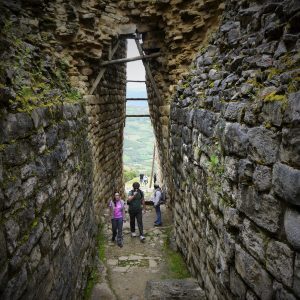


 a Tailor Made Tour
a Tailor Made Tour 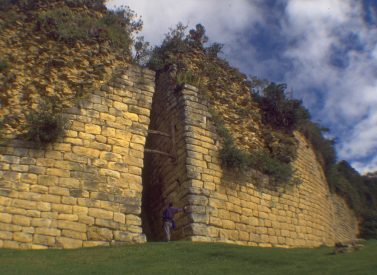


 a Group Tour
a Group Tour 